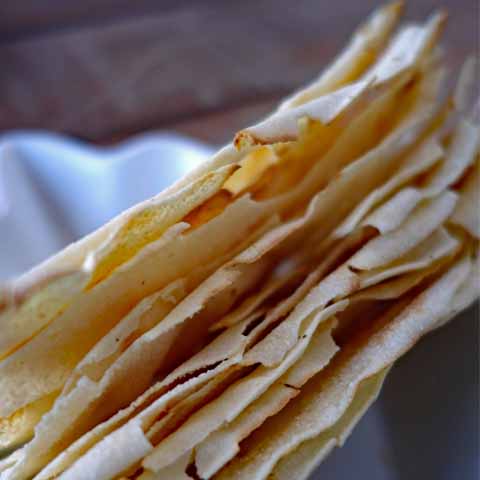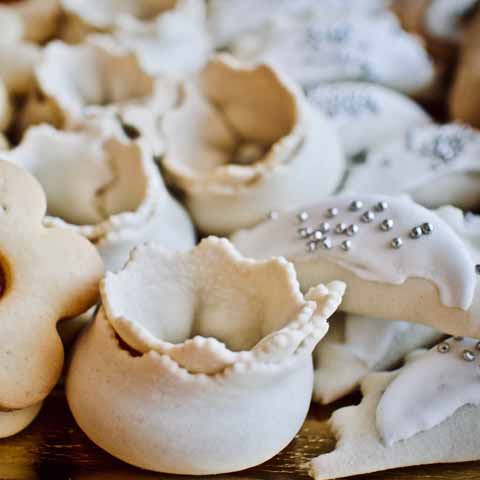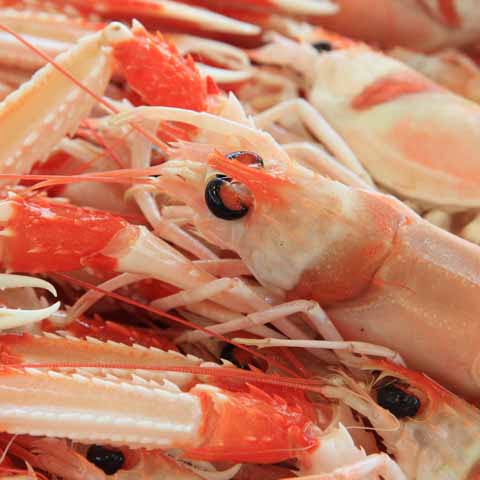Sardinia Culinary Food and Wine Travel Guide
Free from mainland influence, the cuisine in Sardinia reflects tradition and family, and when you sit down to dine, you may expect a wide variety of delicious food and libations. Meals in Sardinia are an excuse to celebrate and enjoy time with loved ones and friends. A meal typically features appetizers, multiple courses, plenty of side dishes, veggies, cheese, dessert, wine, and of course, coffee. Chefs, whether in mama’s kitchen or a 5-star restaurant, neither stint on portions or hurry you to finish. Traditional mealtime can last several hours. Be prepared to be entertained, informed, replete and sated.
The menus for lunch and dinner offer a sampling of the local fare that illustrates why Sardinian food is so unusual and prized. Freshness is the order of the day (or night), and the local produce is essentially harvested to your table.
Regional vegetables, loaves of bread, oil, meat, and seafood see widespread consumption and are prepared according to long-standing traditions.
In ancient times, Sardinia boasted a fisherman culture, resulting in tasty yet straightforward seafood recipes.
Shepherds and farmers required nourishing meals, accompanied by homemade wine to see them through a long and arduous day. That is why you will find such a large selection of mouthwatering cheese, preserved meats, and loaves baked to perfection and utterly delicious.
Savor what experienced bakers knead, fold over, and spread into the lightest and fluffiest dough, oven baked in aromatic loaves and full of heavenly flavor. Encounter roasts of various meats made glorious and tender over the fragrant cooking fires such as the world celebrated “maialetto” or roasted piglet that is the Sardinian cuisine’s most famous and tasty offering. Not to mention irresistible sweet temptations, countless pastries, and almond delicacies whose recipes are the envy of chefs around the world.
Whether dining in upscale restaurants are at a local farmhouse, you will enjoy the rich heritage that is the Sardinian food culture, basking in the flavors and aromas that live on in ancient traditions and recipes. Hotels, restaurants, and Bistros across Sardinia provide time-honored and protected regional cuisine, such as:
• Cagliu (Callu De Crabettu) – Among the older cheeses in Sardinia, this extraordinary offering is produced by filling a baby goat's stomach with milk. After the goat is harvested, the belly full of milk is preserved inside the abdominal wall, which then forms the rind on the completed cheese.
• Pane Caresau (Caresau bread) – Also referred to as Carasatu, or Crasau, the traditional slim, and crispy bread can be up to a meter wide and is made from wheat flour, yeast, water, and salt. Carasau bread can be found in most Italian supermarkets. It is a staple at mealtimes.
• Proscuitto di Pecorino – This time-honored cured meat is created from mutton taken from a special breed of Sardinian sheep. It is distinguished by its extended pear shape as well as powerful yet relatively sweet flavor.
• Pecorino Fiore Sardo – This traditional hard cheese is produced from whole sheep’s milk. It requires approximately half a year to develop fully, by which time it features a dark yellowish or brownish rind. The flavor will become spicier the more the cheese is aged.
Appetizer
The joys of appetizers cannot be overstressed. They are the perfect way to start the upcoming meal. Tasty and rich, they offer an enjoyable way to pass the time and please the palate before the main meal begins. In Sardinia, you may choose from a variety of starters that include cheeses, delicate and flavorful hard-boiled eggs known as Uova alla Sarda, La Cassòla, a fish stew, Cavolata, a pork and cauliflower soup, or delicious semolina gnocchi. For the truly adventurous, a dish of eels marinated in onion, garlic, basil, mint, oil, and vinegar will broaden your culinary experience. Accompanied by an appropriate aperitif, the meal has begun in earnest.
First Course
The first course or Primero, if you will, features dishes made from long used recipes from simpler times. For example, spaghetti in calamari sauce or roasted “San Pietro” fish with potatoes. A local favorite is Malloreddus alla Campidanese, a pasta native to Sardinia served in a tomato gravy with sausage and a dash of saffron (giving this dish an exquisite flavor), resulting in a hearty fare that is both delicious and unforgettable.
Second Course
The second or main course is generally comprised of a flavorful meat offering, such as Porcheddu, a roasted suckling pig that is just one month old when it is prepared. It could very well be the most renowned of Sardinian dishes. Lamb with polenta or served roasted with potatoes is another favorite second-course dish.
Sides and Condiments
To enhance any meal, select from favorite side dishes and condiments. Sardinian cuisine doesn’t skimp on either. A few offerings include Carciofi e patate, Sardinian artichokes served with potatoes. Pinzimonio, a mix of fresh, raw vegetables including fennel, celery, tomatoes, and carrots, served with an olive oil and vinegar dressing, and Asparagi selvatici, delicious wild asparagus are local favorites.
Desserts
No meal is complete without an excellent dessert. Like all Italian desserts, confections in Sardinia are uniquely wonderful. For a nutty flavor try Torrone, a honey nougat with almonds, walnuts or perhaps hazelnuts. The variation with almonds is regarded as the traditional style. Then there is Amaretti, famous Sardinian almond biscuits. The
Padula is a dough that is stuffed with pure ricotta cheese and spiced with a glorious blend of saffron and orange peel. Every visitor should try the Seadas. It is a famous deep-fried pastry containing fresh sheep’s cheese, served up warm, and drizzled with honey or sugars. And no dinner is complete without a piping hot espresso.
Street Foods
Street foods in the region link the traditions of Sardinian cooking to the multinational and eclectic street food culture. Seedas (sebadas) is a popular street food, which consists of a thin piece of dough enveloping a scrumptious chunk of pecorino cheese that is then deep fried. This is a delicious favorite that is often drizzled with honey.
Another popular offering is su porcheddu. This street food is made with pork and potatoes and is served in a paper cone for enjoying on the go.
Sardinia’s Wines
Another essential part of the Sardinian cuisine is the local wine. Among the most well-known offerings are Cannonau, a red with a substantial alcohol content. Other regional favorites are Nuragus, a dry wine, Carignano, a red with a lovely flavor, and Malvasia, a sweet wine perfect to complement desserts. Additional wines produced domestically are Moscato, Vernaccia, Vermentino, and Nasco.
The vineyards in Sardinia are spread out over a variety of terrains, including the fertile plains close to the seashore and the rugged hills of Jerzu and Tertenia. Since there is limited space on the island, the grapes have been lovingly tended for generations, with always the thought of tomorrow and looking ahead.
Travel Guides
The Sardinia Region of Italy
The Cities of Sardinia, Italy


